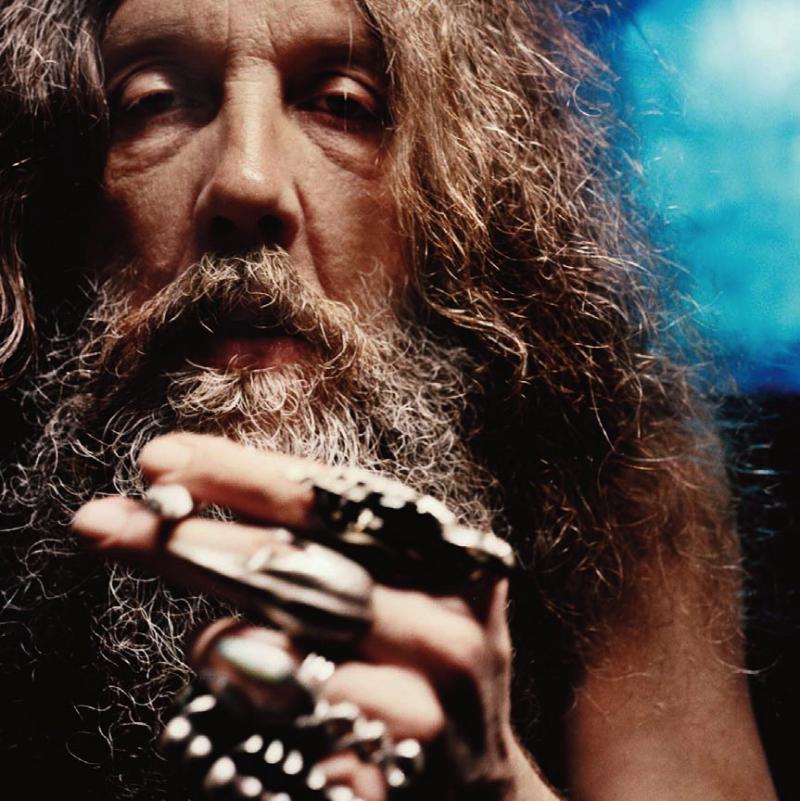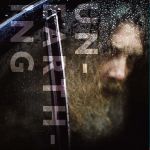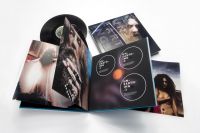Alan Moore's Unearthing, Old Vic Tunnels | reviews, news & interviews
Alan Moore's Unearthing, Old Vic Tunnels
Alan Moore's Unearthing, Old Vic Tunnels
Could this be the most edifying local history lecture ever?

It's very hard to ever know what to expect from Alan Moore, the Mage of Northampton. The author of era-defining comics like Watchmen, V For Vendetta and From Hell has long maintained that art and magic are one and the same, and since the mid-1990s his works have often tended to be long and complex explications of various occult principles, which while eye-opening can often lose readers in all their baroque unfoldings.
The reading of Unearthing could not have had a more atmospheric setting than the catacomb of tunnels and arches underneath the Old Vic and Waterloo station. Authentically musty and pleasingly under-lit, part of the complex has been made over as a venue with a performance area, gloriously decadent-looking bar, and rudimentary festival-style toilets, and vibrates to the distant rumble of trains, giving it a strangely womb-like feel and a real sense of stepping out of the everyday into a strange imaginative space.
The appearance of Moore and his backing musicians, quietly taking their places for the performance, did not puncture the atmosphere one bit. The trio of Andrew “Fog” Broder, Adam “Doseone” Drucker, and Jeff “Jel” Logan all looked quietly hip and dignified, clearly not there to upstage Moore – who at 56 now looks more the great wizard than ever, appearing in an iridescent dragonfly-green frock coat, his drawn face looking out from its surround of greying hair and beard with the penetrating eyes of a Goya figure.
 Without explanation or introduction, Moore began to read from a stack of paper, and the trio set up a slowly rising wash of sound behind him. Using various samplers and effects units, with Broder also playing guitar and piano and Drucker occasionally weaving his keening voice into the mix, their contribution throughout ranged from pure ambience to intense drones and melodies, but - perhaps because all three share a background in avant-garde hip hop - was always performed with an uncanny sense of the rhythms and drama of Moore's speech so that no matter how loud it got, it was never a distraction. Images by Mitch Jenkins, both literal and interpretative, appeared from time to time on a screen behind them, but these too never distracted, merely providing emphasis and extra dimension for Moore's narrative which continued without faltering in his authoritative Midlands tones for almost three hours with two short intervals.
Without explanation or introduction, Moore began to read from a stack of paper, and the trio set up a slowly rising wash of sound behind him. Using various samplers and effects units, with Broder also playing guitar and piano and Drucker occasionally weaving his keening voice into the mix, their contribution throughout ranged from pure ambience to intense drones and melodies, but - perhaps because all three share a background in avant-garde hip hop - was always performed with an uncanny sense of the rhythms and drama of Moore's speech so that no matter how loud it got, it was never a distraction. Images by Mitch Jenkins, both literal and interpretative, appeared from time to time on a screen behind them, but these too never distracted, merely providing emphasis and extra dimension for Moore's narrative which continued without faltering in his authoritative Midlands tones for almost three hours with two short intervals.
No summary of Unearthing could do the richness of the text justice, but at its most basic it was a tribute to his friend, colleague and fellow occultist Steve Moore. But within that was so much more: the narrative would oscillate between Steve Moore's life story and the longer, deeper history of his lifelong home of Shooter's Hill “where Kent begins and London... disappears.” It's no coincidence that the earliest incarnation of Unearthing was in an anthology compiled by Ian Sinclair; like the Hackney writer, Moore is a master of practitioner of “psychogeography”, of the understanding that places have moods and minds of their own – “the free-associating stone subconscious” – that can be analysed over centuries. This analysis, in part, consisted of Moore's reading of history as the story of the riff-raff, from “neolithic chavs fighting over bone bling” onwards, all the way through to the autodidactic misfits who formed London's counterculture and then the comics and small press of the 1970s and on, trying to to take ownership of the mythic back for the people from the imperious likes of Robert Graves.
 Through all of this were woven vivid images of both the banal and the otherworldly, of suburban family life and erotic encounters with the Greek moon goddess Selene, of golf clubs, box hedges and midnight mushroom rituals. Names like Ramsay Campbell, Ken Campbell, Michael Moorcock, Charles Shaar Murray flickered in and out as bit-part players in the two Moores' lives, while Crowley, Burroughs, Gysin and John Cage loomed as influences. But Steve Moore remained the central presence, a real sense of old-fashioned friendship as well as respect running through the stories of his obsessive studies which took him “through riff, hypothesis and rant towards hidden precipices”.
Through all of this were woven vivid images of both the banal and the otherworldly, of suburban family life and erotic encounters with the Greek moon goddess Selene, of golf clubs, box hedges and midnight mushroom rituals. Names like Ramsay Campbell, Ken Campbell, Michael Moorcock, Charles Shaar Murray flickered in and out as bit-part players in the two Moores' lives, while Crowley, Burroughs, Gysin and John Cage loomed as influences. But Steve Moore remained the central presence, a real sense of old-fashioned friendship as well as respect running through the stories of his obsessive studies which took him “through riff, hypothesis and rant towards hidden precipices”.
Alan Moore and Mitch Jenkins interviewed
It was a majestic performance – making the esoteric domestic and vice versa, reminding of the strangeness and depth of history that lurks beneath every suburban surface. With such a constant swirling flow of words, it could only be taken in by total immersion, and as such was one of the most transporting theatrical experiences I have had since I saw John Hurt perform Beckett's Krapp's Last Tape a very long time ago; the rest of the audience clearly felt the same as I heard not a single rustle or movement from them throughout the three hours of the show. An astounding achievement.
Share this article
Add comment
The future of Arts Journalism
You can stop theartsdesk.com closing!
We urgently need financing to survive. Our fundraising drive has thus far raised £49,000 but we need to reach £100,000 or we will be forced to close. Please contribute here: https://gofund.me/c3f6033d
And if you can forward this information to anyone who might assist, we’d be grateful.

Subscribe to theartsdesk.com
Thank you for continuing to read our work on theartsdesk.com. For unlimited access to every article in its entirety, including our archive of more than 15,000 pieces, we're asking for £5 per month or £40 per year. We feel it's a very good deal, and hope you do too.
To take a subscription now simply click here.
And if you're looking for that extra gift for a friend or family member, why not treat them to a theartsdesk.com gift subscription?

Comments
...
...
...
...
...
...
...